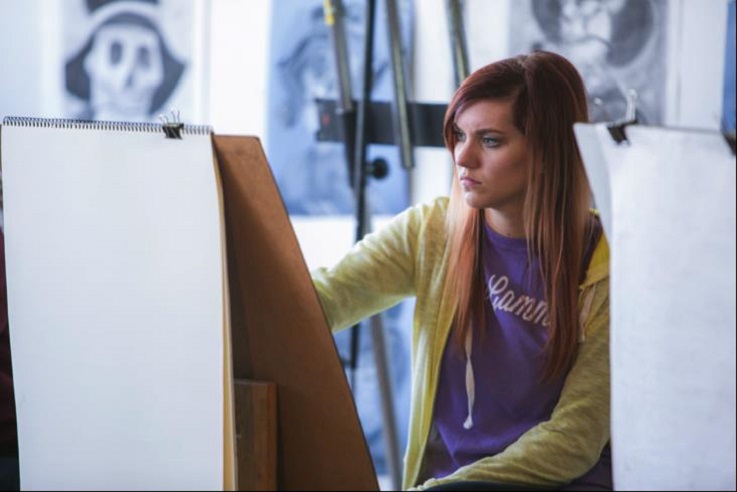Fine Arts students discover the connection between art and social justice
 Art is a powerful weapon that shatters preconceived notions and overturns staunch perceptions, waking us up to a new view of the world around us.
Art is a powerful weapon that shatters preconceived notions and overturns staunch perceptions, waking us up to a new view of the world around us.
The first time in U.S. history that a widespread movement of artists began addressing politics and using their art to influence society was during The Great Depression. Throughout their work these artists highlighted social and political themes like poverty, workers’ strikes, lack of affordable housing and others. An example of one of the great works from that time is Dorothea Lange’s famously known photo “Migrant Mother”.
Between the 1930s and 1970s, graphic artists used their talent to call attention to injustices of war, laborers rights, and inequality. Posters featuring art that both informed and empowered communities were seen plastered on walls, telephone poles and in storefront windows in cities across the U.S.
“We Can Do It!” designed by artist J. Howard Miller in 1942 is a strong example of a poster that would have seen hung up all over towns during that time. This artistic statement was used during World War II to encourage women to take wartime jobs and acting as a symbol for female patriotism.
Art continues to take a stand for social and political movements today. Street art has been a commonly used form of activism as of recent, with this article by Bustle magazine featuring 10 strong examples of street art across the world that makes a statement.
William Woods University Bachelor of Fine Arts students who have an interest in furthering their understanding of the connection between art and various social issues, specifically regarding gender, can take ART 233: Women, Art and Society.
In this course students will learn the history of women’s involvement in the visual arts, struggles with misrepresentation of women artists throughout specific time periods, and where they stand now in the professional world of art.
The Cox Gallery at William Woods is currently hosting an exhibition, as discussed in a previous blog, called “Equality Matters – Conversations on Gender and Race”. The exhibit, which remains open to the public until April 3, features pieces of art that portray contributing artists’ understanding on how issues of gender and race influence contemporary culture.

